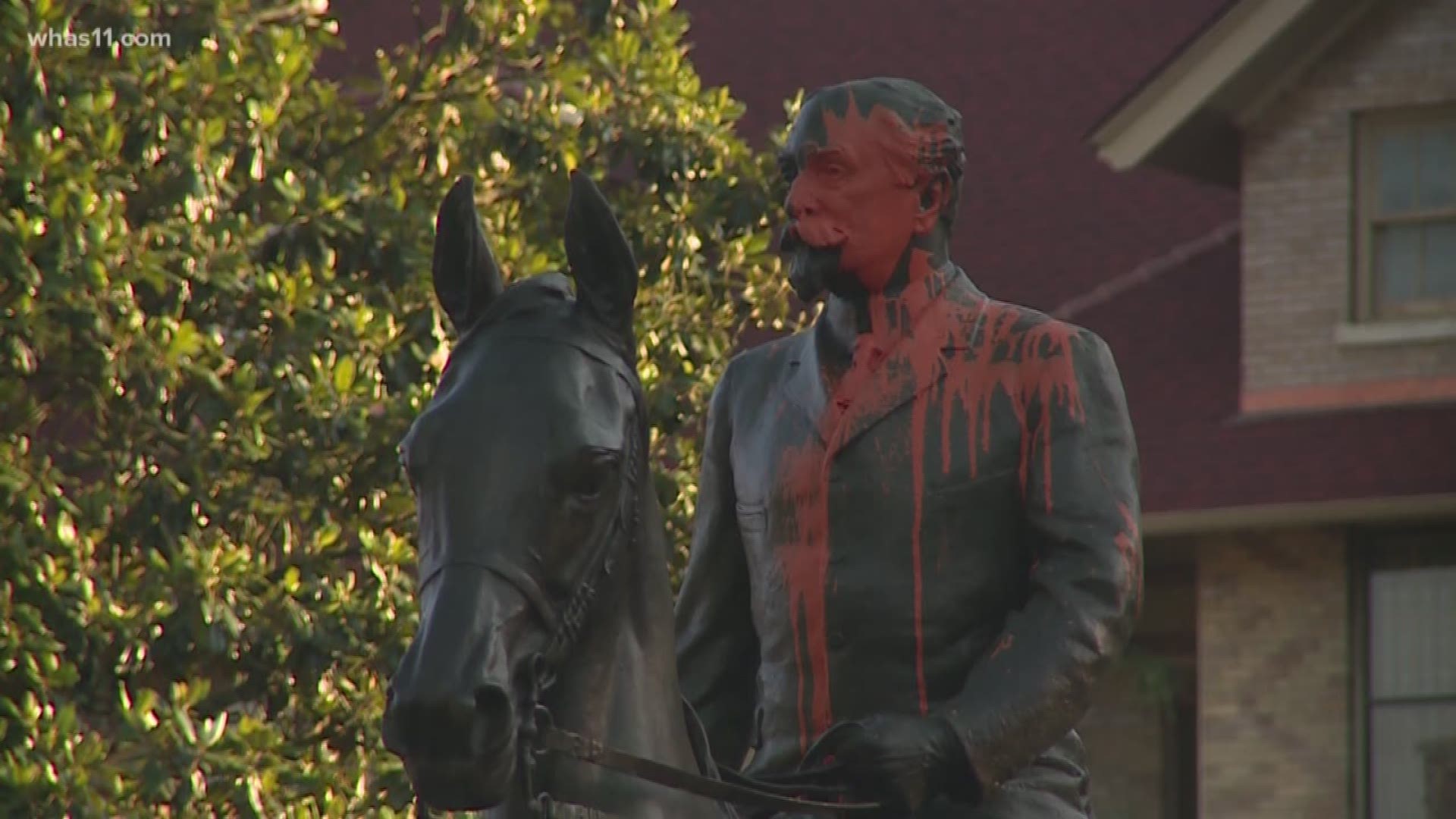LOUISVILLE, Ky. (WHAS) -- Five months after the John Breckinridge Castleman statue was splashed with orange paint - the second of three instances of vandalism in the past year - the controversial remains at the center of a roundabout in the Cherokee Triangle neighborhood, the paint baked onto the metal figure.
Protestors have called for the statue, which depicts Castleman, who served in the Confederate Army during the Civil War, to be taken down, while supporters have lobbied the city to keep the statue. Castleman later served as a brigadier general in the U.S. Army and helped establish Louisville's Olmstead Park system.
After the statue was vandalized with orange paint back in August of 2017, Louisville Mayor Greg Fischer formed the Public Art and Monuments Advisory Committee, tasking the members to develop a set of criteria for evaluating public art and guidelines for new monuments and art pieces.
Saturday morning, the Public Art and Monuments Advisory Committee released its findings in a letter to the mayor. The first principle listed in the findings: Monuments are not history.
"That's a great way to remind us of our history, but that's not our history," Chris Reitz, a member of the Public Art and Monuments Advisory Committee said. "History is in the history books and monuments are in public space."
The committee heard from hundreds of people at meetings and received more than 1,000 comments through its website and another 150 emails, which, according to Reitz, demonstrates the importance of public art to the community. Among the principles listed in the findings is "Our monuments must reflect the demographics and composition of our city as a whole."
"Even if some of us feel that certain monuments maintain a certain system that has harmed Louisvillians for generations, that's a problem," Reitz said.
Throughout the public meetings, Reitz said the committee tried to steer the discussion away from focusing on certain monuments like the Castleman statue, instead hoping to include all public art in Louisville. Their findings, similarly, did not offer a recommendation on the Castleman statue.
"As a Committee we did not address in our report the current controversy surrounding the John Breckinridge Castleman Monument as we believe the purpose of the Committee's work is to develop principles and criteria that apply to today's controversies as well as those we have not yet encountered," the committee wrote in its letter to the mayor.
"It's not really our place to say is this monument in line with our current values," Reitz said. "Instead it's what are our values - the mayor's office has to determine that as an elected official - and then does this object fit in with them?"
The letter includes the following principles regarding Louisville's public monuments and statues:
- "Monuments are not history"
- "Our monument landscape reflects the history of monument making, not necessarily the full history of Louisville. This must be rectified."
- "Our monuments must reflect the demographics and composition of our city as a whole."
- "Monuments must be accessible."
- "History is complex. Some historical figures and events provoke pride. Others shame. Public interpretations of history should not shy away from the latter in favor of the former."
- "The criteria for removing a monument, as well as the criteria for installing a new monument, must be rigorous."
The committee also listed the following as criteria for evaluation:
- "Is the principal legacy of the subject depicted in the monument fundamentally at odds with current community values?"
- "Is the subject a potential rallying point for racist or bigoted groups?"
- "Does the object celebrate a part of history that a majority of Louisvillians believe is fundamental to who we are and what we value?"
- "Is the monument physically accessible to all Louisvillians and visitors? Does it make a nuanced, complex history accessible to its publics?"
To read the report in full, click here.

